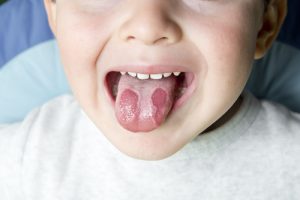Stroke refers to a medical condition when the blood supply to part of the brain is interrupted or reduced, resulting in a lack of oxygen supply to brain cells.
It is a medical emergency that requires prompt treatment. A delay of a few minutes, depending on the location and type of stroke, could be fatal. Early action can significantly reduce brain damage and other complications.
The overall incidence of stroke in Asia varies between 116 to 483/100 000 people per year. Mortality rate and stroke burden range from the lowest in Japan at 43.3 per 100,000 person-years and Singapore at 47.9 per 100,000 person-years to the highest in Indonesia at 193.3 per 100,000 person-years and Mongolia at 222.6 per 100,000 person-years.
What are the symptoms of stroke?
The sudden loss or reduction of blood flow to brain tissue usually causes symptoms in the body parts that are controlled by the damaged areas of the brain. They may include:
- Numbness or weakness in the arm, face, and/or leg, especially on one side of the body
- Trouble speaking or understanding others
- Trouble walking
- Confusion, disorientation, or lack of responsiveness
- Nausea or vomiting
- Sudden behavioural changes, especially increased agitation
- Vision problems, such as trouble seeing in one or both eyes with vision blackened or blurred, or double vision
- Loss of balance or coordination
- Severe, sudden headache with an unknown cause
- Seizures
What are the types and causes of stroke?
There are mainly three types of stroke corresponding to three different causes.
Transient ischemic attack (TIA)
Transient ischemic attack (TIA) is a temporary period of symptoms like those of a stroke. It is caused by brief blockage of an artery supplying brain tissue by plaque (usually cholesterol-containing fatty deposits) or blood clot; blood flow returns spontaneously after a few minutes or hours without any permanent damage.
Though not life-threatening, TIA could serve as a warning sign for future strokes. About 1 in 3 people who has a TIA goes on to experience a subsequent stroke. The risk is especially high within 48 hours after a TIA. Seek medical attention immediately to prevent further progression.
Ischemic stroke
This is the most common type of stroke. It is caused by narrowing or complete blockage of a major artery supplying brain tissue, causing reduction in blood and thus oxygen supply. The narrowing or blockage is likewise caused by accumulation of fatty deposits on the inner wall of the vessel – a condition known as atherosclerosis. There is death of brain cells and permanent loss of certain functions with ischemic strokes.
There have been studies showing that COVID-19 could increase the risk of developing ischemic stroke. However more research is needed to understand the pathophysiology of the link.
Haemorrhagic stroke
Different from the other two types, haemorrhagic stroke happens when an artery in the brain breaks open and leaks blood into surrounding brain tissue. The leakage creates immense pressure on the skull and the brain tissue below. Patients usually report the worst headache in their life and quickly lose consciousness. Urgent surgical intervention is almost always required to clear up the leakage.
What are the risk factors?
Medical risk factors
- Hypertension
- High cholesterol
- Obesity
- Diabetes
- Existing cardiovascular disease: heart failure, heart infection, abnormal heart rhythm
- COVID-19 infection
Lifestyle factors
- Smoking and excessive alcohol drinking
- Physical inactivity
- Diet high in fat and salt
Personal factors
- Age: the older you are, the more likely you are to develop this condition
- Genetic predisposition: those with family history of stroke are more likely to develop it
- Hormones: Use of birth control pills or hormone therapies that include estrogen increase risk
Although there are many risk factors that can lead to stroke, controlling of these risk factors can certainly help to reduce the chances of you getting it. How is stroke being diagnosed and treated then? How do stroke patients undergo rehabilitation after their initial therapy and treatment? Find out more about these thoughts in our upcoming article on the diagnosis, treatment and rehabilitation of stroke!











